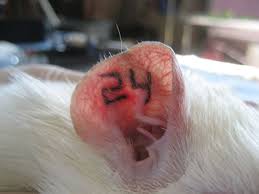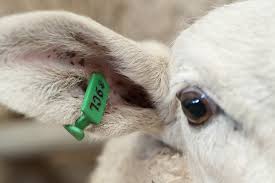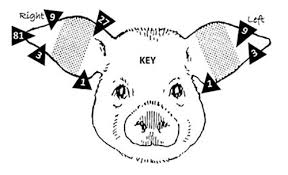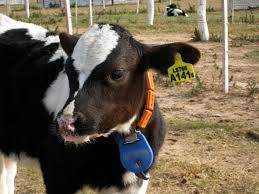Animal identification is a process used to identify and track specific animals. It is done for various reasons, including verification of ownership, biosecurity control, and tracking for research or agricultural purposes.
Proper identification of sheep and goats is essential for maintaining systematic farm records, providing the required quantity of nutrients, implementing better management practices, and ensuring individual care for the animals. It is also a necessary requirement for registering pure-bred animals and for selecting breeding stock and sale animals.
Several systems can be used for identification. Some methods, such as stencils, are temporary and are meant to be used until more permanent methods are implemented. Others, such as tattooing, are permanent.
Read Also: Methods of Livestock Breeding in the Tropical Environment
Methods of Identification
1. Tattooing

Animals can be tattooed on any part of their skin that is visible, but the ear is commonly used to avoid damaging the skin, which may be used in leather production. The process involves making a series of pierced marks through the ear and rubbing in Indian ink.
Equipment Required:
i. Lettering.
ii. Indian ink.
iii. Methylated spirits.
iv. Tattooing pliers.
v. Records.
Procedure:
- Place the letters or figures in the tattooing pliers and test them on paper.
- An assistant should hold the animal in a standing position.
- Clean the ear of wax and dirt using methylated spirits.
- Smear ink on the inside of the ear.
- Line up the pliers between the ear’s blood vessels in the middle of the ear.
- Squeeze the pliers with a quick, firm movement to penetrate the skin (while the assistant restrains the animal).
- Remove the pliers and rub more ink into the holes using a stiff brush.
2. Ear Tagging

- Dip the tags and applicator in disinfectant.
- Write the number on the tag before tagging.
- Restrain the animal in a standing position.
- Clean the ear with methylated spirits.
- Clip the tag into the ear using the applicator, avoiding ear veins.
- Place the tag as close to the head as possible to reduce the chances of it being ripped out.
Read Also: Maggot Feeding: Can You Feed Fishes with Maggots?
3. Ear Notching

Many purebred breeders avoid ear notching because it detracts from the animal’s appearance. However, a simple system of notching that can be easily read and interpreted should be used if this method is chosen.
For example:
i. Notches in the top of the left ear = 1
ii. Bottom of the left ear = 10
iii. End of the left ear = 100
iv. Centre of the left ear = 1000
v. Top of the right ear = 3
vi. Bottom of the right ear = 30
vii. End of the right ear = 300
viii Centre of the right ear = 3000
Procedure:
- Hold the animal by the head and use a pair of ear notchers to remove a V-shaped piece of tissue from the edge of the ear to create the correct notches.
- Apply antiseptic to the notches.
Do you have any questions, suggestions, or contributions? If so, please feel free to use the comment box below to share your thoughts. We also encourage you to kindly share this information with others who might benefit from it. Since we can’t reach everyone at once, we truly appreciate your help in spreading the word. Thank you so much for your support and for sharing!

